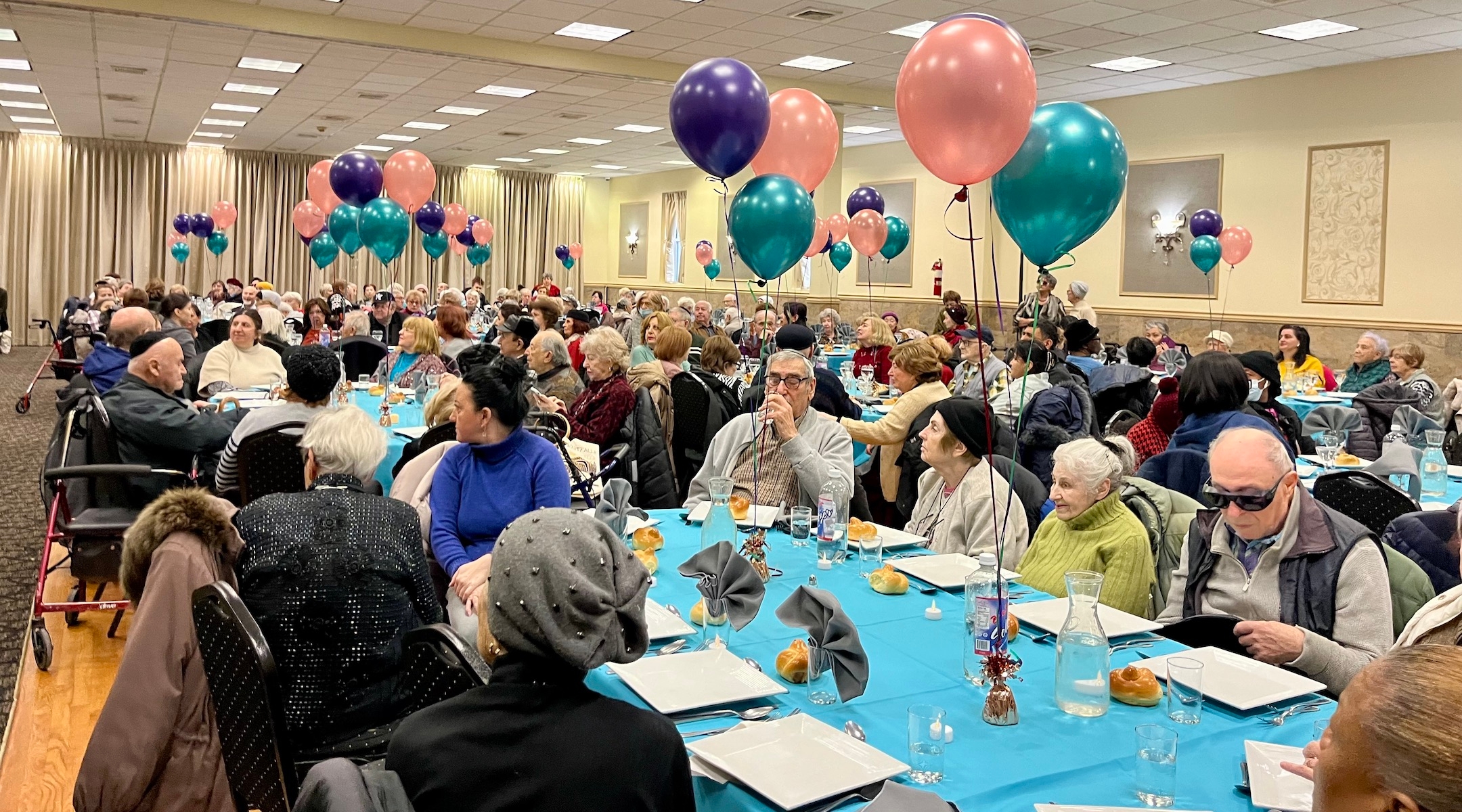(New York Jewish Week) — The music is blasting at a banquet hall in Midwood, Brooklyn — everything from “Hava Nagila” to Frank Sinatra’s “My Way.” Pink, purple and turquoise balloons float above the large tables that each fit a dozen guests.
It’s just past noon on Tuesday, and waiters weave through the room to dole out lunch: golden loaves of challah and flaky knishes, steaming soup, a colorful array of pickled vegetables and roast chicken. Several guests are up and dancing; a few couples sway together in the center of the room, while a group of buoyant women make their way to the front, holding hands as they swing together to the music. Dozens of other partygoers are deep in conversation with each other while some sit by themselves, listening to the music.
The gathering is not in celebration of a bar mitzvah, a wedding or a just-born baby. Rather, the party is in honor of everyone in the room: This is a gathering for Holocaust survivors who live in Brooklyn. Nearly everyone here, almost 200 people in total, is a survivor. The youngest of the bunch in their late 70s, the oldest over 100.
“Everybody says hello to me — that’s what I love about it,” a survivor named Clara told the New York Jewish Week, adding that, every time she hears the voice of a social worker calling to invite her to the monthly party, “I can feel goosebumps.” She doesn’t stick around to answer any more questions — the music is on and she’s off to dance again.
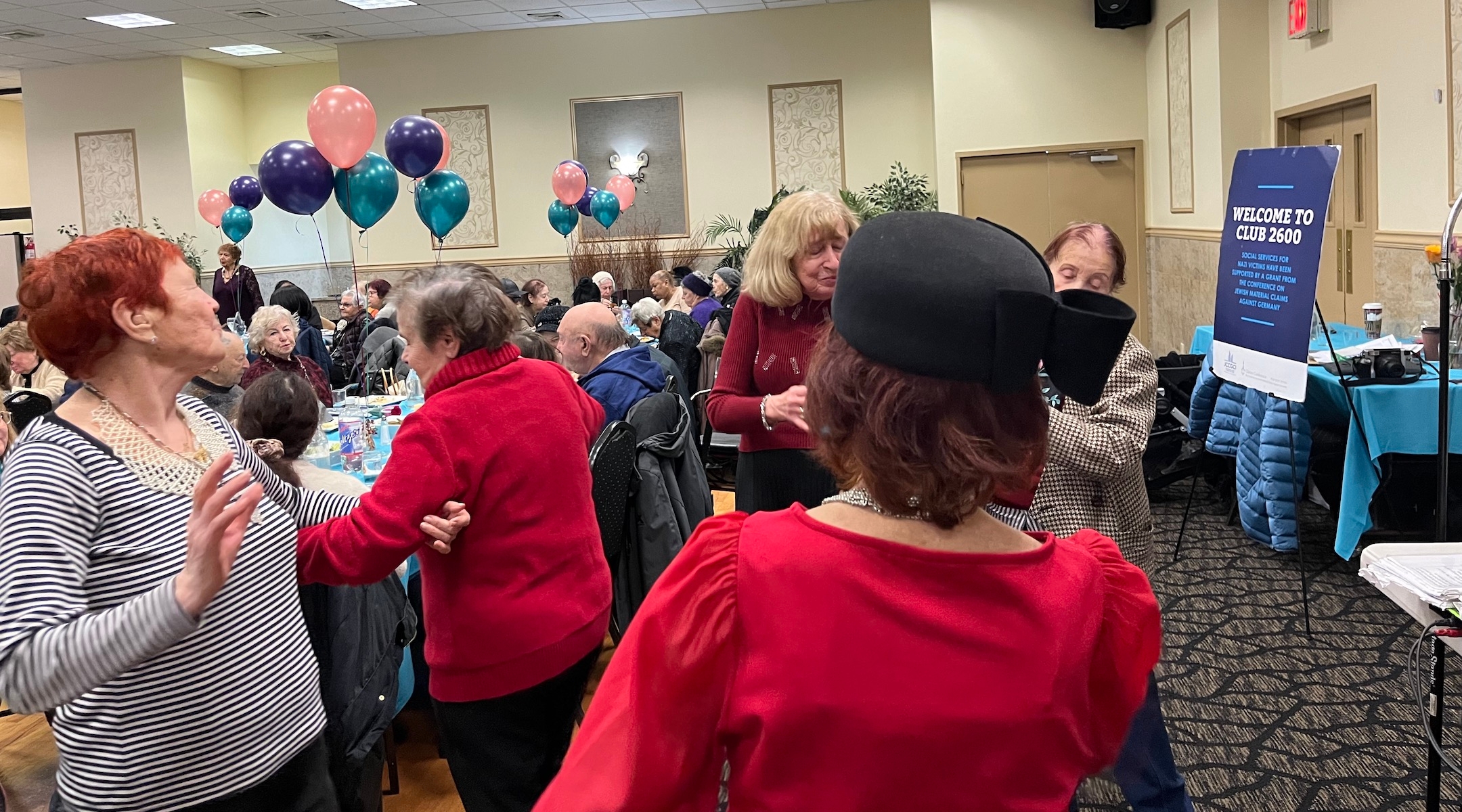
Guests wear their favorite clothes and jewelry and often get their hair and makeup done for the party. (Julia Gergely)
Called “Club 2600” — homage to the party’s previous location at a senior center on 2600 Ocean Avenue — this festive gathering, which began nearly 20 years ago. is thrown every month by the Jewish Community Council of Greater Coney Island, a social services organization and community center in Southern Brooklyn. Since 2018, the party has taken place at Merkaz HaSimcha, a kosher banquet hall.
“I’m very happy when they have these meetings and I always try to come,” said Ruth Mermelstein, a 95-year-old survivor who was liberated from Auschwitz when she was 16 and who has now lived in Flatbush for more than 70 years. “I enjoy meeting a lot of people here.”
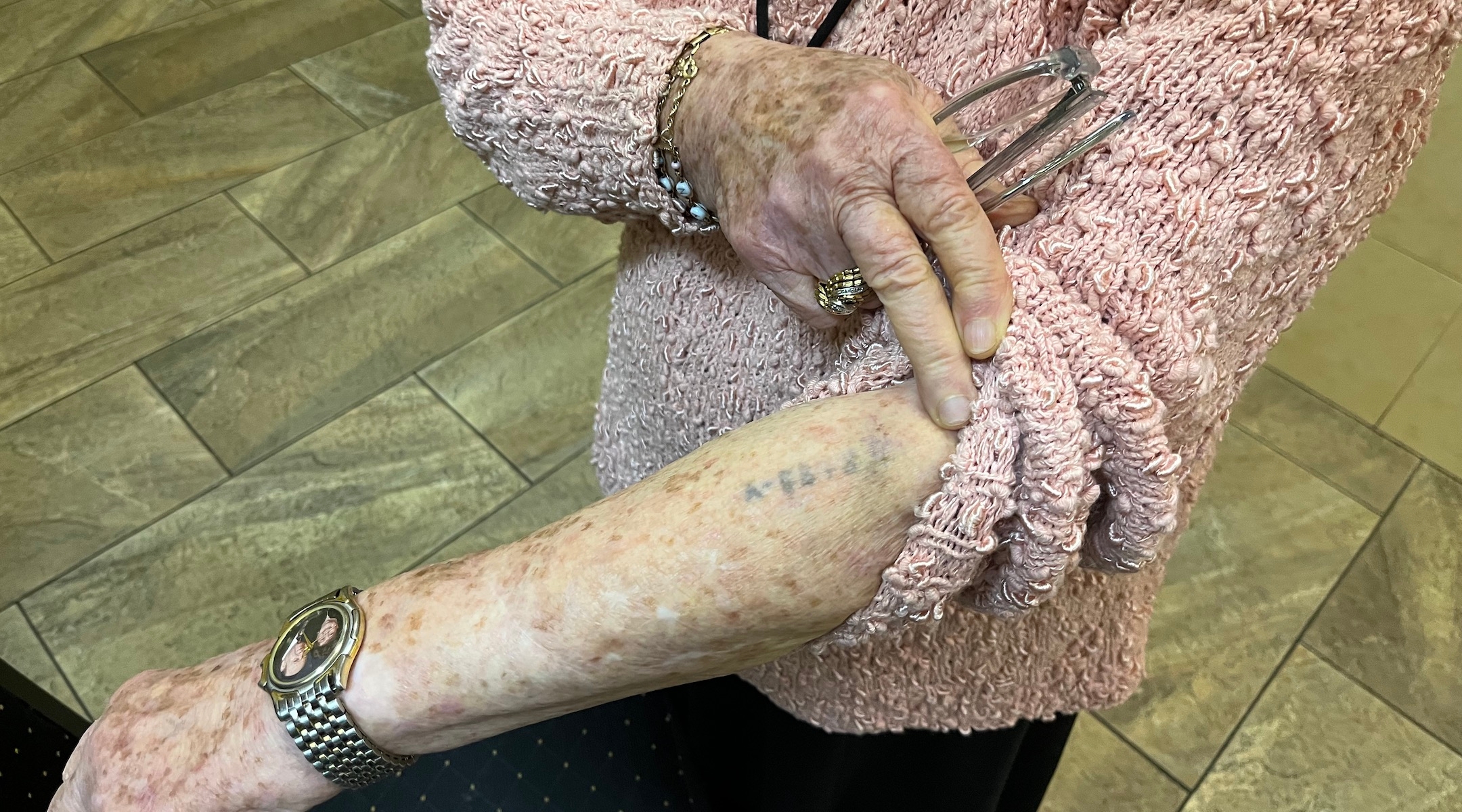
Ruth Mermelstein pulls up her sleeve to reveal the tattoo numbered on her body during her time in Auschwitz. On her wrist, she wears a watch that holds a picture of her and her husband, Ernest, who passed away 15 years ago. (Julia Gergely)
In addition to the guests of honor, about a dozen of JCCGCI’s social workers — three of whom speak Russian, like many of the survivors — drift around the room. They chat and kibbitz with the survivors, as well as check in with them about any assistance they may need in their lives, from making doctor’s appointments to help with household repairs to aiding holiday preparations.
“They have built so much — their jobs, their families, their legacy,” said Aliza Kelman, the director of client services for Holocaust survivors at the JCCGCI, who was the very first social worker for the program in 2012. “Every one of them has such a story to share. Everyone is a fascinating individual.”
Social outlets like this are just one of the many services that JCCGCI, one of the largest social services agencies for Holocaust survivors in the city, provides for Brooklyn’s survivor population. They do so with a grant from the Conference on Jewish Material Claims Against Germany (aka the Claims Conference) — which last year was $57 million, according to Hudi Falik, the chief program officer for JCCGCI’s Holocaust survivor support systems, making the organization the largest grantee of the Claims Conference in the country. The JCCGCI is a vital resource in Brooklyn, where more than 70% of New York’s 14,700 Holocaust survivors currently live, according to a demographic report released this week from the Claims Conference.
“We are immensely grateful for their generous support,” Falik said. Still, she added, “There are not enough funds available to meet the needs of this heroic yet vulnerable population. It’s painful for us to be unable to meet these needs due to lack of capacity, and appalling that there are just simply not enough resources.”
By far the organization’s biggest budget line is for home care assistance, Falik said; this includes evaluating a client’s independence and needs and staffing full or part-time caretakers. They also provide transportation, hot meal delivery and Medicaid advocacy.
Despite the dwindling population of Holocaust survivors, JCCGI receives some five to 10 client referrals weekly, said Kelman, with a waitlist of around 275 people that last year took 11 months to clear. To be able to provide everyone with the complete care they require would cost another $10 million, she added.
“Some other organizations triage the waitlist based on their age. I can tell you — if you look around this room, you won’t know how old anyone is,” Kelman said. “We have one man who still goes to work at the OBGYN department at Maimonides Hospital. You would never know he is over 100. Then we have a 79-year-old who has no other family and a disabled child that they’re responsible for. There’s no right answer.”
Kelman added that when she started her job 12 years ago, the JCCGCI worked with approximately 400 survivors. Today, the organization serves some 3,000 survivors.
Despite a decrease in the total number of living survivors, the Claims Conference demographic report attributes the increase in need to the aging of the population — the average age of Holocaust survivors in New York City is now 86. In many cases, as survivors age and see an increase in disability, they either need assistance for the first time or require more assistance than previous years.
“The data we have amassed not only tells us how many and where survivors are, it clearly indicates that most survivors are at a period of life where their need for care and services is growing,” Gideon Taylor, the president of the Claims Conference, said. In 2023 the organization distributed more than $118 million to agencies in New York that provide services to Holocaust survivors. “Now is the time to double down on our attention on this waning population. Now is when they need us the most.”
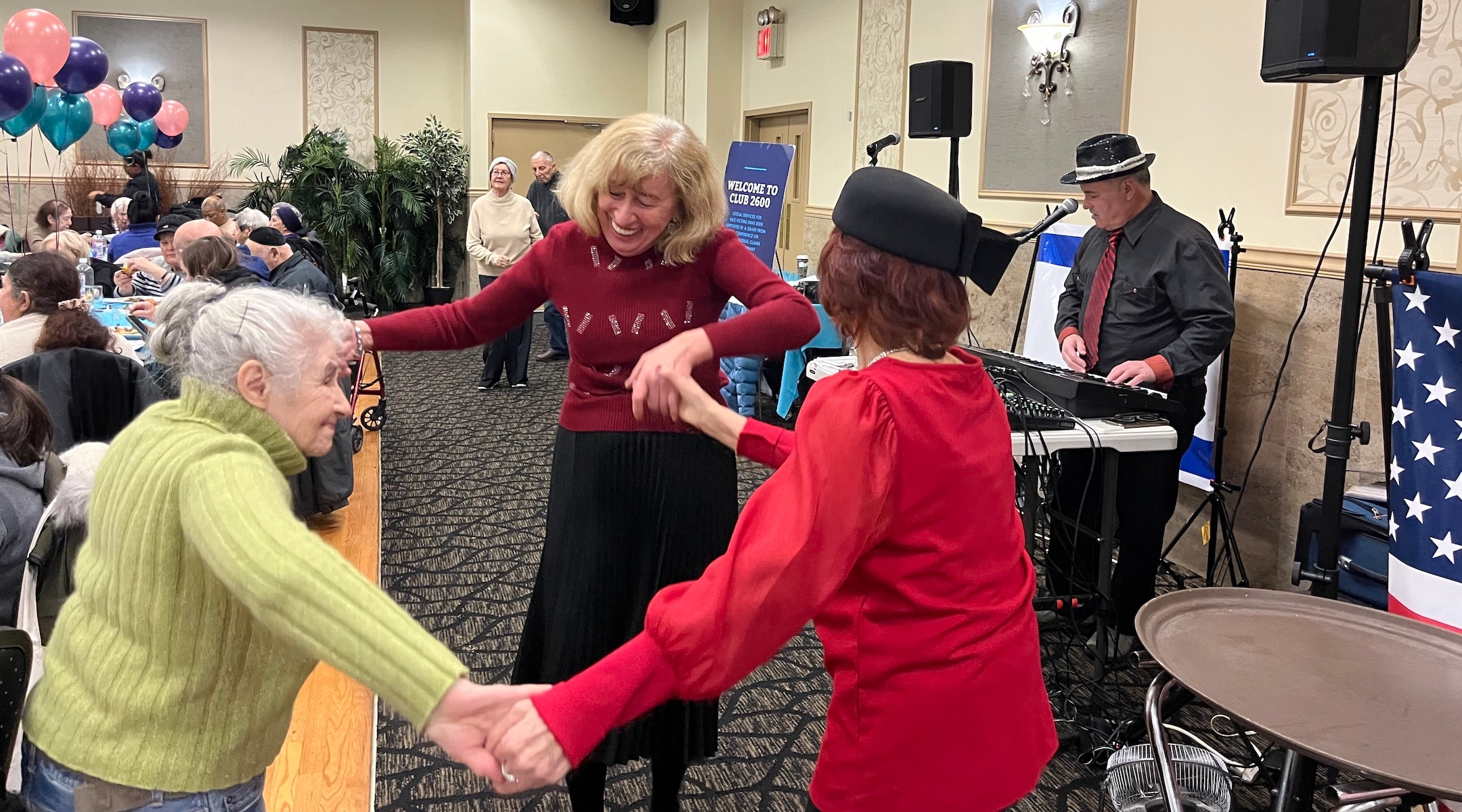
The JCC’s monthly party provides an opportunity for survivors to connect with each other in an easy, low-stakes, low-commitment environment. (Julia Gergely)
The JCC’s monthly party provides an opportunity for survivors — whether they are perfectly lucid and independent or require full-time care — to connect with each other in an easy, low-stakes, low-commitment environment. For most of the attendees, the JCCGCI arranges transport, either picking them up in a mini bus (many live in Flatbush, Midwood, Coney Island or Borough Park) or arranging for a car service.
Judith Weiss said she started coming to the Club 2600 parties four years ago, when her husband died. “He was sick for a while, so I didn’t go anywhere. I didn’t know anyone. I only started to go places since he passed away,” she said.
Now, the parties are the main way she stays involved with the JCCGCI. Every month, they pick her up at her home in Flatbush, drive her to the party, and drive her home again afterwards. “I go to see people,” Weiss, 87, said. “I go more [now] than all the years before put together.”
Despite the participants’ advanced ages, new connections can always be made. At one party a few months ago, Weiss was waiting to get on the bus home when she heard another woman, Katy Lowy, speaking Hungarian, the language of her childhood. Weiss heard the women mention a particular brick factory-turned-ghetto in Debrecen, Hungary, where many local Jews were rounded up to be taken to concentration camps.
“I said, ‘You were there? I was there,’” Weiss recalls saying — and it turns out that she and Lowy had last seen each other when Weiss was 7 years old and Lowy was 10. Both remember the harrowing, six-day journey they took via cattle cars in June 1944 — Weiss was eventually taken to the Theresienstadt concentration camp and Lowy to Mauthausen.
“So many years later, I’d never met anyone who was at that particular place at that particular time,” Weiss told the New York Jewish Week. “It’s strange. I felt myself back there, 7 years old.”
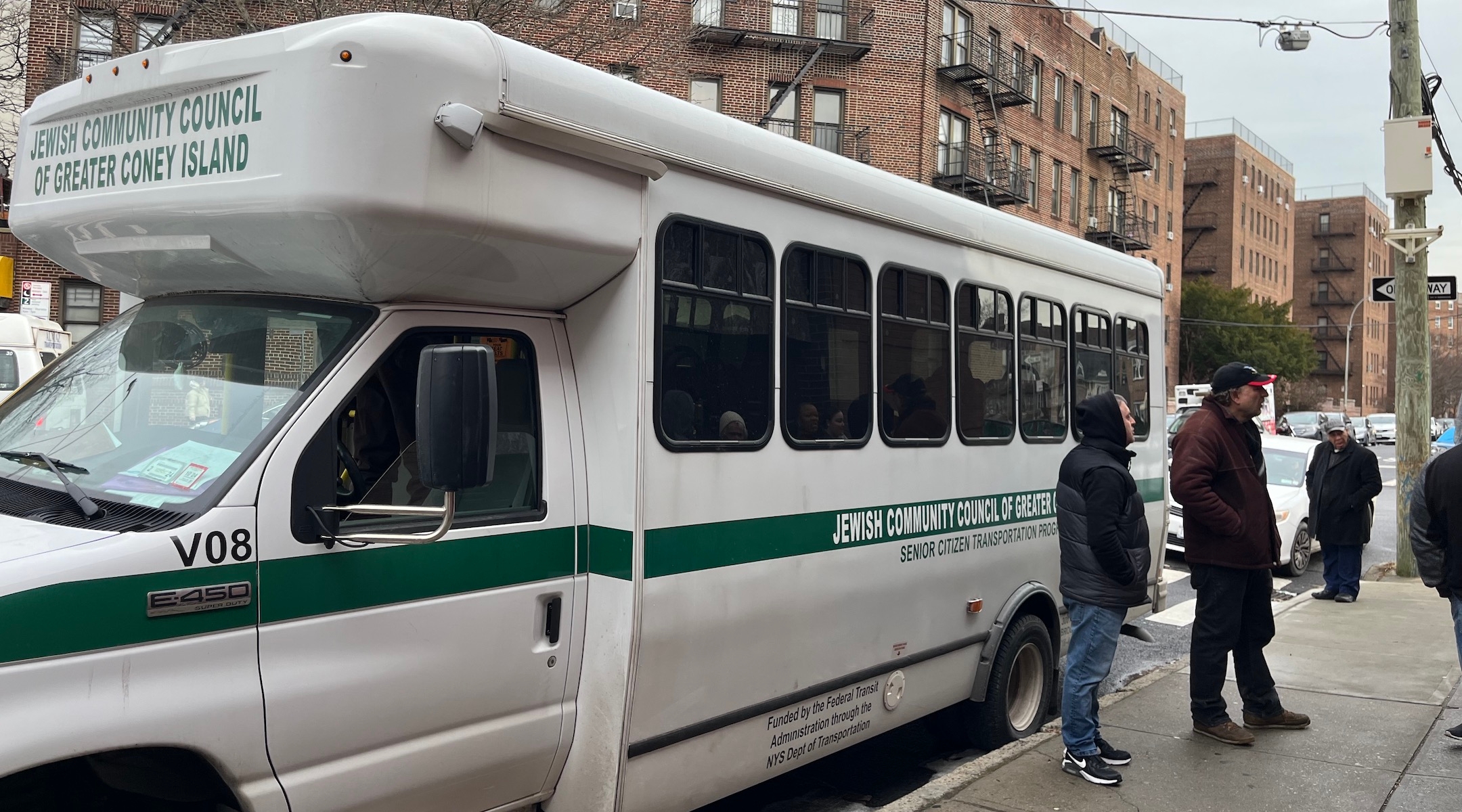
A bus waits outside to transport the guests to and from their homes. (Julia Gergely)
Still, despite harrowing experiences the survivors endured during the Holocaust, the vibe at the catering hall is a markedly carefree one. Near the end of the two-hour party, one of the social workers, Zehava Birman Wallace, steps to the microphone and wishes hearty “happy birthday” to everyone in the room who has celebrated one since the last gathering, doling out roses as gifts.
One man, tired out from the dancing, gets up to leave. “I live nearby,” he said, explaining he can walk home and has no need for a bus.
A huge smile breaks out across his face. “That was so great,” he tells Kelman, placing a hat on his head and walking to the front door. “I feel so happy. Thank you so much.”
The New York Jewish Week brings you the stories behind the headlines, keeping you connected to Jewish life in New York. Help sustain the reporting you trust by donating today.
